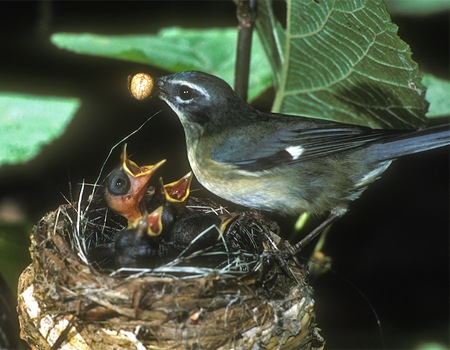Bioaccumulation and Biomagnification of Mercury in Upland Food Webs of the Northeast

Mercury is a neurotoxin that can significantly impact natural systems and human health. Deposition of mercury can be high in the northeastern U.S. Headwater stream networks in northeastern upland forests include many sites where conditions for methylation, that is formation of biologically mobile mercury, are ideal. These headwater sites are seldom sampled in surveys of mercury pollution. Consequently, their contribution to regional contamination is unknown. NSRC researchers documented mercury bioaccumulation (by organisms) and biomagnification in forest food webs associated with headwater streams.
Researchers quantified spatial variation in mercury bioaccumulation by forest floor insects, web-building spiders, salamanders, and birds; assessed how physical and chemical conditions affected mercury bioaccumulation; and documented how food web structure and diet composition affected mercury biomagnification by using stable isotopes of nitrogen (15N) and carbon (13C). They sampled at upstream and downstream locations within watersheds with well vs. poorly buffered soils that occur along three streams in each of the Jeffers Brook and Hubbard Brook valleys, respectively, of the White Mountains National Forest in New Hampshire.
Researchers found above background-levels of mercury bioaccumulation in all taxa sampled with highest concentrations in top predators such as spiders and birds. Ongoing analyses indicate that greatest differences in bioaccumulation occurred among streams within a watershed rather than between watersheds. These findings suggest that headwater streams provide conditions necessary for mobilization of mercury, but bioaccumulation and biomagnification vary greatly across the complex landscape of the White Mountains.
